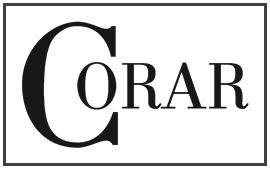Frequently Asked Questions
Below you will find some of the answers you may have about the radionuclide and radiopharmaceuticals industry. If you have a question that isn’t answered here, please contact CORAR.
What is a radioisotope?
A
radioisotope is a radioactive version of an element. Radioactive
elements differ from the stable versions of the same element in that
they have either more or fewer neutrons. For example all forms of
carbon have the same number on protons (six), but the most common form
has six neutrons as well. Forms with five (11C), seven (13C) and eight
(the famous 14C) neutrons are radioactive. Some radioisotopes have very
long half-lives. For example, the half-life of 14C is 5700 years,
making it useful for dating organic materials. And some have very short
half-lives: the half-live of 11C is only 20 minutes. There is no
chemical difference between the way the radioactive and non-radioactive
versions of an element react. The fact that there is no difference
allows the radioactive versions of the element to be substituted for the
non-radioactive versions to produce a tracer. This principal can also
be applied to therapy. Iodine, which was the first element used in
nuclear medicine, is used exclusively by the thyroid gland. If a
radioactive isotope of iodine is introduced into the body, it will be
taken up by the thyroid gland in exactly the same way as non-radioactive
iodine. A gamma camera can then be used to determine how well the
thyroid is working. Similarly, a large dose of radioactive iodine can
be used to treat thyroid cancer by delivering a tumor-killing radiation
dose directly to the cancerous tissue. (Reprinted from snmmi.org)
What are radiopharmaceuticals?
A
type of imaging agent used in nuclear medicine, a branch of molecular
imaging. It is a compound consisting of a drug and a small amount of
radioactive material that localizes in specific organs or areas of the
body and can be detected by an imaging device. (Reprinted from
snmmi.org)
Do you have a question for CORAR? Contact us.
Latest News
-
MITA and CORAR Support House Bill to Foster Access to Innovative Medical Imaging https://t.co/Riwxdv6noS #CORAR
-
CORAR Comments on FDA Draft 503B RP Compounding Guidance https://t.co/EJMpjHYcz4 #CORAR
-
CORAR Comments on FDA Draft Nuclear Pharmacy Compounding Guidance https://t.co/Hhcem9KabR #CORAR
